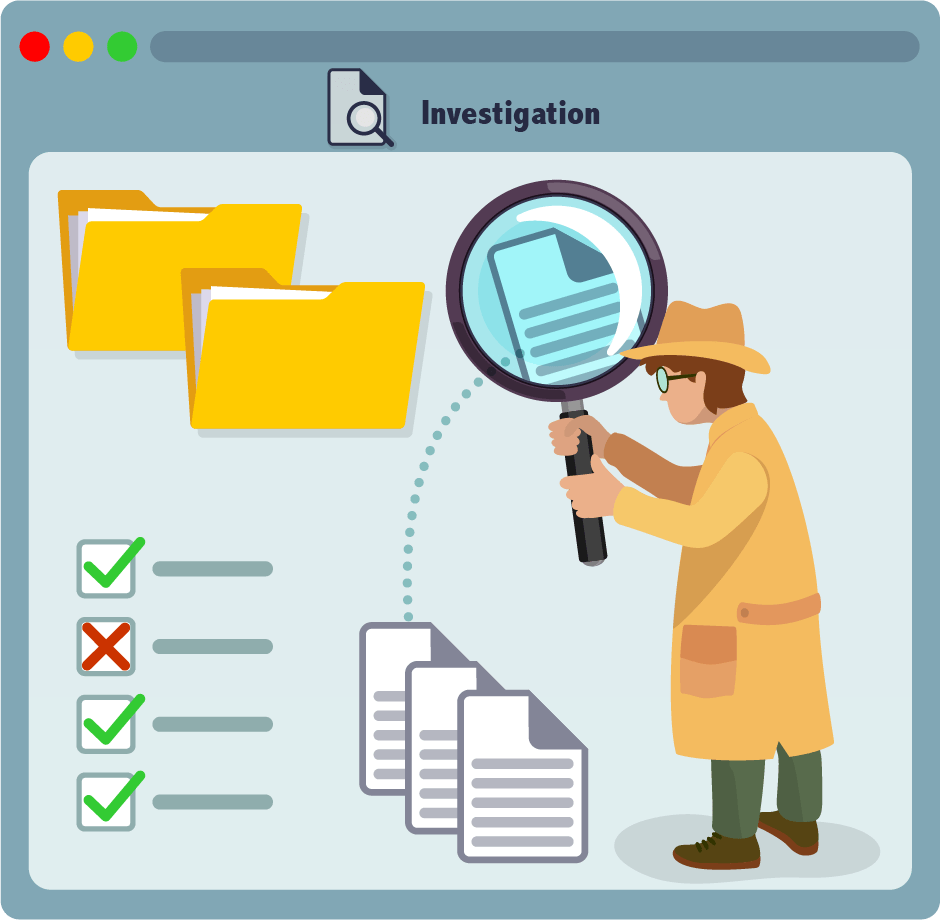In today’s digital age, businesses rely heavily on technology and digital systems to operate their day-to-day activities. However, with the increasing reliance on technology, there is also a growing risk of cyber threats and attacks. Cybersecurity incidents can have severe consequences, including financial losses, damage to reputation, and loss of sensitive data. When a cybersecurity incident occurs, it is crucial to respond promptly and effectively. This includes conducting an incident investigation and root cause analysis to determine the underlying cause of the incident and develop solutions to prevent similar incidents from happening again.
Incident investigation and root cause analysis are complex processes that require specialized knowledge and expertise. It involves gathering evidence, analyzing data, and using various tools and techniques to identify the root cause of the incident. Without a comprehensive incident investigation and root cause analysis, businesses may not be able to fully understand the underlying issues that led to the incident and may be at risk of future attacks.
Securium Solutions is a trusted incident investigation company that specializes in root cause analysis services (RCA). Our team of experts has extensive experience in cybersecurity and uses a systematic approach to investigate incidents and identify the root cause of the problem. We work closely with our clients to develop solutions that mitigate future risks and prevent similar incidents from happening again.
It is a valuable technique that is used to investigate incidents and identify the underlying causes that led to the incident. It is a systematic approach to problem-solving that aims to identify the root cause of an issue rather than just treating the symptoms. It is used in a variety of fields, including cybersecurity, engineering, healthcare, and manufacturing, among others.
In the context of cybersecurity, it is used to investigate incidents such as data breaches, network intrusions, and other security incidents. It is a critical step in understanding how the incident occurred, what vulnerabilities were exploited, and how to prevent similar incidents from happening again in the future.
It is typically used when an incident has occurred and the immediate response has been completed. The incident investigation process begins with gathering information about the incident, including the scope of the incident, the affected systems and data, and any relevant logs or other data sources.
Once the scope of the incident has been determined, the investigation team will use tools and techniques to identify the underlying causes of the incident. This includes analyzing system logs, reviewing network traffic, and conducting interviews with relevant personnel to understand what happened and how the incident occurred.

Incident Investigation Procedure

Identify the incident: The first step in the incident investigation procedure is to identify the incident. This involves gathering information about the scope of the incident, the affected systems and data, and any other relevant information.
Secure the scene: Once the incident has been identified, it is important to secure the scene to prevent further damage or loss. This may involve isolating affected systems, preserving evidence, and limiting access to the incident site.
Collect evidence: The next step in the incident investigation procedure is to collect evidence. This may involve collecting system logs, network traffic data, and other relevant data sources.
Analyze the evidence: Once the evidence has been collected, it must be analyzed to determine the root cause of the incident. This may involve using tools and techniques to identify the underlying causes of the problem.
Develop solutions: Based on the findings of the investigation, the incident response team should develop solutions to address the root cause of the problem.
Implement the solutions: Once the solutions have been tested, they should be implemented. This may involve updating systems, training personnel, and making other changes to the organization’s security posture.
Monitor and review: Finally, the incident response team should monitor the effectiveness of the solutions and review the incident investigation procedure to identify areas for improvement.
5 Whys: The 5 Whys technique is a simple but effective tool that is used to identify the root cause of a problem. The technique involves asking “why” questions in a sequence to drill down to the underlying cause of the issue. The goal of the technique is to identify the most basic cause of the problem.
Pareto chart: The Pareto chart is a graphical tool that is used to identify the most common causes of a problem. The chart is based on the Pareto principle, which states that 80% of the effects come from 20% of the causes. The chart can help incident response teams to focus their efforts on the most significant causes of the problem.
Fault tree analysis: Fault tree analysis is a systematic and logical tool that is used to identify the causes of an incident. The tool involves constructing a tree-like diagram that shows the various events that led to the incident. Each event is then analyzed to determine its likelihood and consequences.
Root cause analysis software: There are several software tools available that can help incident response teams to perform this for more efficiently. These tools can help teams to organize data, visualize the incident, and identify the most likely root cause of the problem.


Define the problem: The first step in our methodology is to define the problem. This involves gathering information about the incident, including the time and date of the incident, the location, and the impact on the organization. We also collect any available evidence, such as logs, network traffic data, and witness statements.
Gather data: The next step is to gather data related to the incident. This includes analyzing system logs, reviewing network traffic data, and interviewing employees who were involved in the incident. We also use a variety of tools and techniques to collect and analyze data, such as forensic analysis tools and log analysis software.
Identify the root cause: Once we have gathered all of the relevant data, we begin to identify the root cause of the incident. This involves using a variety of tools and techniques of analysis, such as the 5 Whys, fishbone diagrams, and Pareto charts. We also consider other factors that may have contributed to the incident, such as human error or process issues.
Develop solutions: Once we have identified the root cause of the incident, we develop effective solutions to prevent similar incidents from occurring in the future. This may involve implementing new policies and procedures, improving employee training, or enhancing the security of the organization’s systems and infrastructure.
Implement and monitor: The final step in our methodology is to implement the solutions and monitor their effectiveness. We work closely with our clients to ensure that the solutions are implemented effectively and that any necessary adjustments are made over time.
Access to data: In order to conduct a thorough investigation, incident response teams need access to a wide range of data, including system logs, network traffic data, and employee records. It is important that the organization has systems in place to collect and store this data, as well as policies and procedures in place to ensure that the data is protected.
Skilled personnel: Effective incident investigation and root cause analysis requires skilled personnel who have the necessary training and expertise. This includes personnel who are trained in incident response, digital forensics, and root cause analysis. It is important that the organization has a team of skilled personnel in place who can respond quickly and effectively to incidents.
Incident response plan: An incident response plan is a critical requirement for effective incident investigation and root cause analysis. The plan should outline the procedures that will be followed in the event of an incident, including how data will be collected, how the incident will be analyzed, and how solutions will be developed and implemented.
Root cause analysis tools and techniques: It requires a variety of tools and techniques, such as fishbone diagrams, 5 Whys, and Pareto charts. It is important that the organization has access to these tools and that personnel are trained in their use.
Effective communication: It require effective communication between all parties involved, including incident response teams, management, and other stakeholders. It is important that the organization has systems in place to ensure that communication is timely, accurate, and effective.


Access to data: In order to conduct a thorough investigation, incident response teams need access to a wide range of data, including system logs, network traffic data, and employee records. It is important that the organization has systems in place to collect and store this data, as well as policies and procedures in place to ensure that the data is protected.
Skilled personnel: Effective incident investigation and root cause analysis requires skilled personnel who have the necessary training and expertise. This includes personnel who are trained in incident response, digital forensics, and root cause analysis. It is important that the organization has a team of skilled personnel in place who can respond quickly and effectively to incidents.
Incident response plan: An incident response plan is a critical requirement for effective incident investigation and root cause analysis. The plan should outline the procedures that will be followed in the event of an incident, including how data will be collected, how the incident will be analyzed, and how solutions will be developed and implemented.
Root cause analysis tools and techniques: It requires a variety of tools and techniques, such as fishbone diagrams, 5 Whys, and Pareto charts. It is important that the organization has access to these tools and that personnel are trained in their use.
Effective communication: It require effective communication between all parties involved, including incident response teams, management, and other stakeholders. It is important that the organization has systems in place to ensure that communication is timely, accurate, and effective.
Here are some key security questions you may have when considering it and its services:
The cost of this services can vary depending on the scope of the investigation and the complexity of the incident. At Securium Solutions, we work closely with our clients to develop customized solutions that meet their needs and budget.
The length of time required for this depends on a number of factors, including the scope of the investigation and the complexity of the incident. At Securium Solutions, we work quickly and efficiently to identify the root cause of the incident and develop effective solutions to prevent similar incidents from occurring in the future.
At Securium Solutions, we use a comprehensive methodology for it. We work closely with our clients to gather all of the relevant data and use a variety of tools and techniques to identify the root cause of the incident. We also develop effective solutions to prevent similar incidents from occurring in the future and work with our clients to monitor the effectiveness of these solutions over time.
Yes, at Securium Solutions, we provide incident investigation and root cause analysis services for all types of incidents, including cyber security incidents, data breaches, and other security incidents.
At Securium Solutions, we take confidentiality very seriously. We have strict policies and procedures in place to ensure that all data related to our clients’ incidents is protected and kept confidential. We also work closely with our clients to ensure that all necessary legal and regulatory requirements are met.
Yes, at Securium Solutions, we provide ongoing support to our clients after that. We work closely with our clients to ensure that the solutions we develop are implemented effectively and that any necessary adjustments are made over time. We also provide ongoing training and support to our clients to help them maintain the security of their systems and infrastructure.